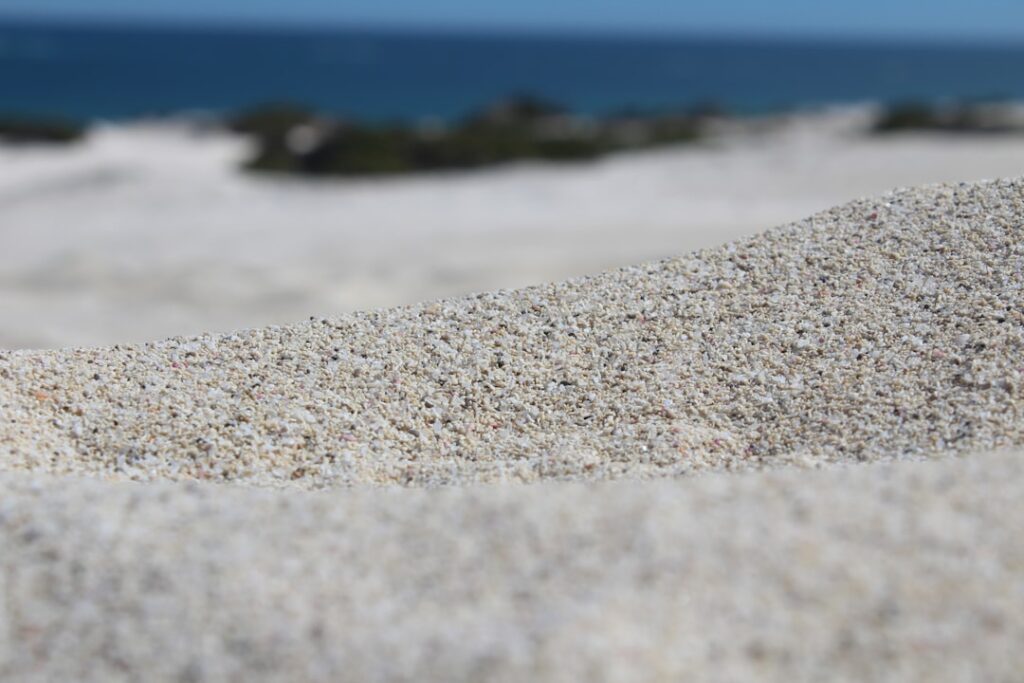The seemingly simple expanse of a beach represents the final stage of a geological odyssey that spans millions of years and hundreds of miles. Each grain of sand is a data point, a survivor of an immense journey of transformation and transportation. To understand how a beach is formed is to decode a complex, dynamic system governed by physics, chemistry, and time. This ultimate checklist deconstructs that process, analyzing the critical stages that turn mountain peaks into coastal shores.
1. The Source Rock: Pinpointing the Origin
Every grain of sand begins as part of a much larger parent rock, or bedrock. The composition of a beach is directly correlated to the geology of the inland region that feeds it.
- Terrigenous Sand: The most common type of sand is composed of silicate minerals. Quartz, with a hardness of 7 on the Mohs scale, is exceptionally durable and resistant to chemical weathering. This is why many beaches have a light, tan color. Other minerals like feldspar are common but break down more easily, eventually becoming clay.
- Volcanic Sand: In geologically active regions, sand can be composed of basalt fragments and volcanic glass, resulting in black sand beaches like those found in Hawaii and Iceland.
- Biogenic Sand: In tropical regions with minimal river runoff, sand is often composed of calcium carbonate from biological sources. This includes the skeletal remains of coral, mollusks, foraminifera, and algae, creating iconic white sand beaches.
2. The Weathering Gauntlet: Breaking Down the Bedrock
Before rock can become sand, it must be broken down into smaller pieces, a process known as weathering. This occurs through two primary mechanisms:
- Physical Weathering: This is the mechanical disintegration of rock. Key processes include frost-wedging, where water freezes and expands in cracks, and abrasion, where rock fragments collide and wear each other down. This process creates smaller, more transportable sediment without changing its chemical composition.
- Chemical Weathering: This involves the chemical decomposition of minerals. Hydrolysis breaks down less stable minerals like feldspar into clay, leaving behind the more resistant quartz. Oxidation (rusting) can affect iron-rich minerals, contributing to the color of the sand.
3. The Transport Engine: The Journey to the Sea
Once weathered into smaller particles (sediment), the material begins its long journey to the coast. Rivers are the primary transportation system for terrigenous sand.
- Fluvial Transport: The velocity and volume of a river determine its sediment load capacity. Faster, more turbulent rivers can carry larger particles, from pebbles and gravel down to sand and silt. As the river slows, heavier particles are deposited first. A single grain of sand may be deposited and re-mobilized thousands of times over millennia before it reaches the ocean.
- Aeolian Transport: Wind is another significant, though more localized, transport agent. It is highly effective at moving sand-sized particles, creating the coastal dunes that often form the backshore of a beach.
4. The Coastal Sorting Machine: The Role of Wave Energy
When river sediment finally reaches the ocean, it enters a high-energy sorting environment. Waves, currents, and tides are the dominant forces that determine the final characteristics of a beach.
- Wave Action: The energy of waves is the most critical factor. High-energy coastlines with powerful waves wash away finer particles like silt and clay, leaving behind coarser sand or even pebbles. Low-energy coastlines, such as those in protected bays, allow finer particles to settle, resulting in beaches with soft, fine sand.
- Longshore Drift: This is the process by which waves hitting the shore at an angle create a current that runs parallel to the coastline. This current, the longshore current, transports vast quantities of sand along the coast, effectively moving beaches over time.
5. The Deposition Zone: Building the Beach Profile
A beach is not a uniform pile of sand; it is a structured landform with distinct zones created by different coastal processes.
- Foreshore: This is the area between the high and low tide marks. It is constantly being reworked by wave action (swash and backwash), resulting in a sloped, well-sorted surface.
- Backshore: Located above the normal high tide mark, this area is only affected by storm waves. It is typically flatter and may contain finer sand deposited by wind, often forming berms or the start of a dune system.
The continuous balance between erosion (removal of sand) and deposition (addition of sand) defines whether a beach is growing, shrinking, or in a state of dynamic equilibrium. This balance is fragile and can be disrupted by storms, sea-level changes, and human activity.
Photo by Donni Gentle on Unsplash

